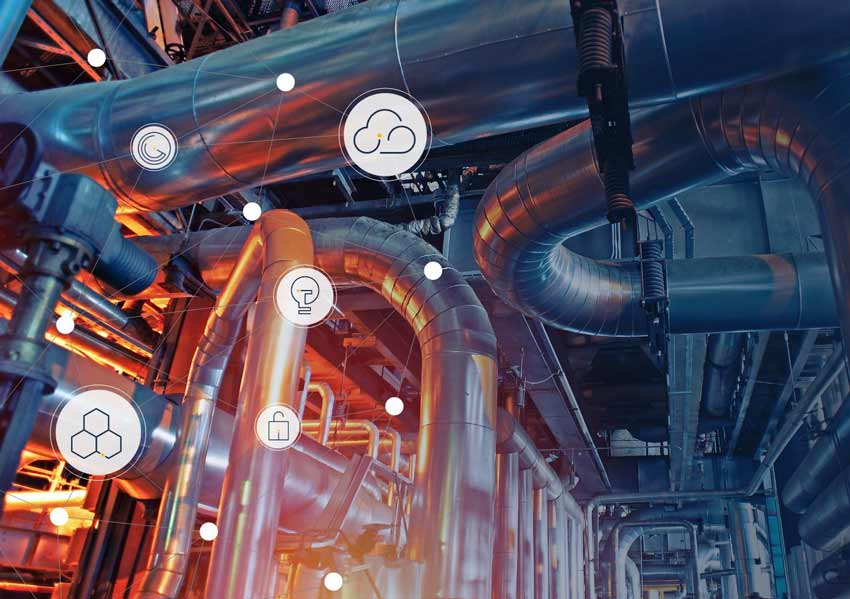Quality control and Quality 4.0
Quality control is definitely one of the most important elements of production in today’s industrial plants. We are not only sure that the customer receives a product of full value, without defects and meets the quality-price conditions … But we, as entrepreneurs, save!
How do we save through increased quality control?
… After all, it ‘costs money’? It cannot be denied that improving the results of quality control is not ‘free’. However, it costs much more to withdraw already manufactured, defective products from the market, transport them, store them, remake them, or in the worst case, dispose them, and deliver a new, full-value product. Penalties imposed by various institutions or possible civil lawsuits (especially important in the case of foreign markets) in the case of delivering products that do not meet the requirements are also important. It is also worth paying attention to the potential failure on the market – especially when it comes to food products, household chemicals, pharmaceuticals or cosmetics – where the product reaches the widest group of recipients. Losses in such a case are basically uncountable, and trust in the brand often falls headlong. There are known cases of companies that had to rebrand a product or temporarily withdraw it from production.
Quality control requires not only the employment of appropriate employees, but also appropriate software
Of course – product quality control looks different in the case of cosmetics or food production, completely different in the case of mass production of toys, floor boards or … for example in a non-automated sewing room. Each of these processes will require different software and different IT resources.
Quality control in FMCG – HACCP procedures
For most FMCG products, the quality control is multi-wave. Briefly: in the first step, the lab technicians take samples of the product. It is checked in terms of chemical, physical, bacteriological, and also in terms of the potential content of contaminants. This is where software for laboratories works. The tested product goes to packaging, where it is also verified in terms of its physical appearance – proper gluing, closing in a container, no blemishes on the containers. This stage usually does not take place without properly trained employees who are looking for physical irregularities of the product.
Another control takes place during packing – securing the product for shipment. Not only food or household chemicals are verified in this way, but also toys or other plastic elements with which our skin, eyes and mucous membranes come into contact. Thus, plastic, paints, varnishes and even glass are (or should be) tested in laboratories. We have already written about laboratories and special software for this purpose here >>. Of course, properly written SCADA software can be used to supervise the process.
It is worth noting that for food production there is a procedure based on hazard analysis and critical control points (HACCP), consisting of as many as seven principles. The HACCP concept, which was created for… NASA back in the ’70s, is based on continuous control of the food product. It guarantees the consumer a safe, high-quality product. Properly configured SCADA software as well as MES systems can also help in this process. Elements of such analysis were implemented in one of the Polish dairies (including metal detectors, but also procedures for operators and reporting on their performance). Read more >>
Quality control in other manufacturing industries
There are also products on the market that do not require laboratory verification (or their semi-finished products have passed through it at earlier production stages). As an example, we will use toy cars and floor panels. After folding the toy car (regardless of whether it is automatic or manual), it enters the conveyor belt, at which the appropriate people discard the missing, broken, poorly made toys. Similarly, in the case of floor panels – after cutting – they are placed on a conveyor, where qualified personnel rejects incorrectly cut or poorly varnished products.
When do you find out about manufacturing errors?
Defective products – repair or disposal, well-made products – packaging. Simple? Simple! The system works!
Well no. When will you get information about production errors? When this information will be available to the management team? When the percentage of products broken or requiring corrections is calculated, and unfortunately it does not happen on a regular basis. Only after the end of the process (of a specific batch), you can calculate the amount of ‘waste’ and its possible usefulness. It’s definitely …
To late! It can be done better!
Only how? Implementing appropriate quality control management mechanisms. So that all waste and production errors are counted automatically in real time. To create dedicated quality control software, you can use both MES systems and appropriately adapted SCADA software along with Historian systems. The data counted in a faster way is transferred to reporting systems, and then directly to your monitor. By using solutions such as SCADA software, you can determine the percentage value of production errors, after exceeding which you receive an appropriate alarm, so you can intervene at earlier stages of production. Of course, you can still keep track of the percentage of production errors using reports. You produce better and more efficiently, minimizing losses!
Quality control upgrade
Naturally, you can use additional control elements – cameras, infrared cameras, hyperspectral cameras, appropriate samplers, scales – however, this process cannot be fully automated. There is a need for a human factor that simply senses the quality of the product organoleptically.
Advanced mathematical models can also help with quality control. By creating a digital twin, you can stimulate the production process without directly affecting it. Later you can implement only those changes, that during the tests ‘on the digital twin’ brought a specific benefit. This way you protect yourself against production errors that will burden your quality control department, production, and even worse, your pocket.
Quality 4.0
This predictive quality analysis is one of the slogans of Industry 4.0 – Quality 4.0. The idea concerns a larger set of elements of the company’s life – research, production, logistics, sales, and after-sales services. Quality in production primarily involves machine learning (and machine vision control, 2D and 3D inspections), correcting operational procedures based on data, predictive analysis and (known from Industry 4.0) Industrial Internet of Things and the use of cloud computing. An element of Quality 4.0 is also SOP – standard operating procedure. For example, Proficy Workflow, used, among others, in to implement SOP in an electronic version (getting rid of paper documents) and advanced quality verification.
Start with an audit
The aspect of quality control in production plants is multi-threaded, requires the management to audit the currently existing mechanisms and analyze product loss accounts in recent months (sometimes even years). However, the implementation of appropriate “defense mechanisms” will allow to reduce the number of rejects, and thus maximize profits.


